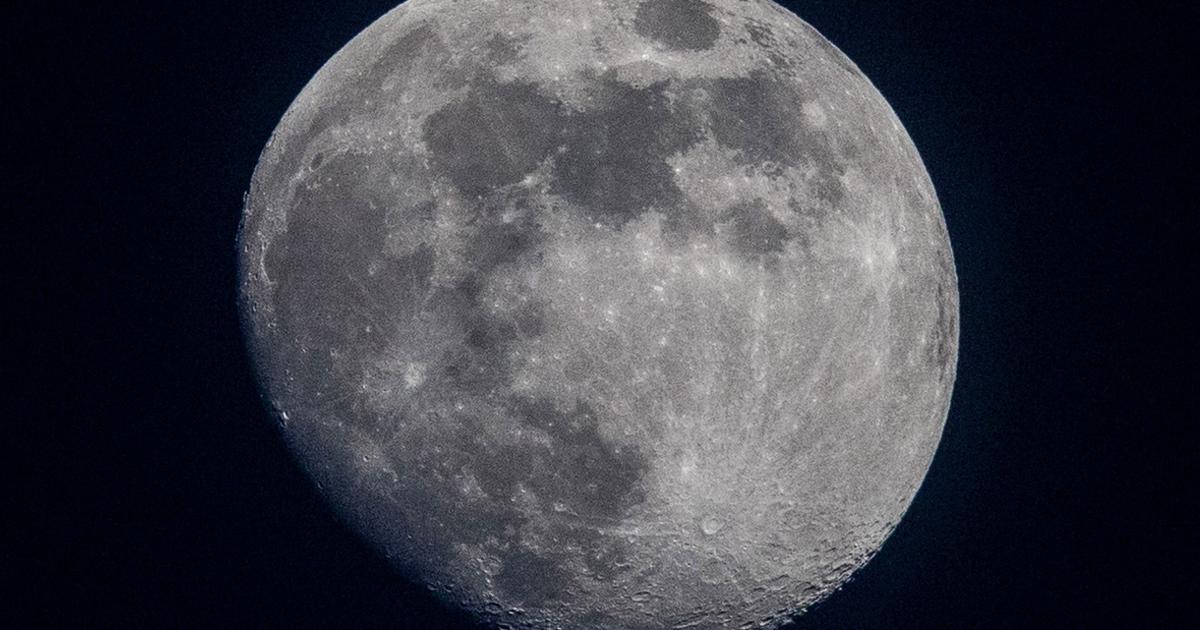The year 1968, which began with massive protests against the Vietnam War and continued with social revolutions for freedom, ended with historic runs, jumps and flights.
On the athletic tracks of the Games in Mexico, many Olympic champions achieved feats that seemed insurmountable, from another world.
It took decades for the last of those world records to be broken, such as those for the 100-meter dash and long jump, achieved in October 1968. Two months later, Apollo 8
took off, the first ship that carried astronauts to fly
over Moon.
It was the first manned mission launched by a Saturn V, which remained the most powerful rocket in history until the Artemis program for lunar reconquest began in 2022.
On November 16, NASA broke its own record, more than 50 years later.
On takeoff of the
Artemis 1 mission
the SLS launch vehicle (acronym in English for space launch system) marked a slightly higher momentum (15%) than that of the Saturn V. But everything indicates that this record will soon be pulverized.
The title of the most powerful rocket in history will go to SpaceX's Starship (which doubles the takeoff thrust of the Saturn V) as soon as it makes its first successful flight, and that could happen this April, Elon Musk announced on Twitter. last week.
The president of the aerospace company SpaceX also wants his megarocket to be the first that can be reused over and over again: "The key to taking life beyond Earth is to have a completely and quickly reusable orbital rocket" Musk said in a recent interview.
Mega rockets are essential in the new space race, whose first challenge is to set foot on the Moon again this decade and establish a colony on Mars as its goal.
None of this will be possible without this new generation of super-heavy payload launch vehicles, capable of lifting around 100 tons of cargo into low-Earth orbit.
There they detach, after leaving the spaceships ready to shoot towards other worlds.
Of the 384,000 kilometers of average distance to which the Moon is, the most critical part of the trip is to ascend to almost 200 kilometers of altitude, until placing the spacecraft revolving around the Earth in a low orbit, which is stable and safe.
All in less than 10 minutes, in which a failure is fatal.
“In that initial stage, most of the energy and fuel of a mission to the Moon is consumed, and also a large part of its astronomical budget of billions of dollars,” explains Rafael Clemente, historian of the space race and author from books like
The Other Flights to the Moon
(Dome Books, 2021).
And it is that, in order to escape the force of gravity with the heavy load necessary for that trip, the record power of the gigantic SLS and Starship rockets is needed, as tall as 30-story buildings.
“These new rockets have a colossal aura reminiscent of the allure and sense of epic of the Saturn V and the Apollo program.
Although this was an unrepeatable historical event, the new generations have the opportunity to live some of those sensations”, recalls Clemente, who watched the launch of Apollo 15
live. “We were thousands of people
in a rostrum at Cape Canaveral, five kilometers from the platform.
Takeoff was a thunderous spectacle, which we could feel as if it were happening right in front of us.”
To get back on the Moon, NASA has relied on its proven technology for decades.
The SLS inherits key components from the space shuttles and its multi-module structure—on which the Orion spacecraft travels—is based on the Saturn V from the Apollo missions.
That strategy has already paid off with the success of the
Artemis 1:
“The first launch of the SLS has been simply impressive.
Each and every one of the rocket systems performed as expected,” Mike Sarafin, NASA mission manager, said last November.
The space agency revealed a more detailed analysis in January, confirming those excellent initial data, and has already given the green light to use the SLS on manned missions.
a retro giant
SpaceX has chosen a very different path.
In the Starship, the spacecraft takes off docked on a single module rocket, the result of a simplified and integrated design.
The imposing ensemble is the tallest space vehicle ever built and, despite its retro appearance that evokes 1950s science fiction, it contains state-of-the-art technologies, some of them unprecedented in the space race.
With previous experience in reusable rockets, such as the Falcon, Elon Musk's company decided to start almost from scratch to design its first megarocket.
His big bet was to create a completely new engine: the Raptor, which burns liquid methane (a fuel never used before in orbital rockets) and which aspires to be able to be reused in up to a thousand flights.
This engine also innovates with highly efficient staggered combustion, which allows it to reduce its size and thus multiply its applications.
The Starship's Super Heavy booster, for example, carries a swarm of 33 Raptor engines at its base.
And in January, SpaceX successfully completed static firing for 31 of the 33 engines, the last technical hurdle it needed to clear before testing the first launch of the Starship.
Super Heavy Booster 7 completed a full duration static fire test of 31 Raptor engines, producing 7.9 million lbf of thrust (~3,600 metric tons) – less than half of the booster's capability pic.twitter.com/cNLmp3Pn7G
— SpaceX (@SpaceX) February 10, 2023
SpaceX will be a pioneer in testing these technologies on rockets, but not the only one working on them.
The European Space Agency (ESA) has been developing Prometheus since 2017, its own low-cost and reusable engine.
In addition, it is also powered by methane: “Methane is very cost-effective compared to hydrogen and is slightly more efficient than kerosene,” explains Jérôme Breteau, ESA's Director of Future Space Transport.
The liquid hydrogen used by SLS is much more complicated and expensive to handle than liquid methane, which in turn is much cleaner than the kerosene used by SpaceX on its previous rockets.
In addition, there would be the possibility of producing methane fuel on Mars.
NASA's SLS, on the other hand, uses the same main engines of the space shuttles (RS-25), reconditioned units that had been left over after the retirement of those legendary spaceships in 2011. Despite this strategy of partial use and reuse that he proposed NASA launched the SLS project, the costs of this megarocket have skyrocketed and the plan has also broken records in terms of delays, since then US President Barack Obama approved the project in 2010. Of every SLS flight, no They will not even take advantage of the side thrusters, which did fall by parachute and were recovered after the launches of the shuttles.
Total reuse is essential for the SpaceX Starship, and the great key to its promise to reduce the cost per flight to levels never seen in the space industry.
But it is a medium-term goal, which they hope to achieve after at least two years of testing.
In the first tests, Musk's company does not promise to reuse any component and will be content with the fact that the rocket does not explode in the air.
“I'm not saying we'll get the Starship into orbit on the first flight, but the excitement is guaranteed.
It's not going to be boring.
I give it a 50% chance," said Elon Musk in his most recent statements about the Starship.
The billionaire businessman emphasizes in his appearances that "fly, explode, learn, repeat" is the motto that has led SpaceX to lead the space cargo transport sector.
In the absence of final authorization from the US Federal Aviation Administration, SpaceX has announced that it has everything ready for that first launch of the Starship.
And the first interested in making that happen as soon as possible is NASA, its competitor in the mega-rocket race.
The American space agency has selected a modified version of the ship (Starship HLS) as the lunar landing module for the reconquest of the Moon in the
Artemis 3
mission . For the descent to the Moon, the astronauts will be transferred to it from the Orion spacecraft
,
that by itself does not have the capacity to land on the moon.
That's why the success of the Starship is critical to getting the first woman to the Moon.
In this new space race, the two competitors are not actually fighting to build the most powerful mega-rocket in history.
That merit will go to Elon Musk's company.
It's more of a relay race, in which SpaceX and NASA need each other to reach the finish line on the lunar surface.
You can follow
MATERIA
on
,
and
, or sign up here to receive
our weekly newsletter
.
Subscribe to continue reading
Read without limits
Keep reading
I'm already a subscriber






/cloudfront-eu-central-1.images.arcpublishing.com/prisa/ZLW56GYGEBEJLPNDSNPUK2NJZE.jpg)


